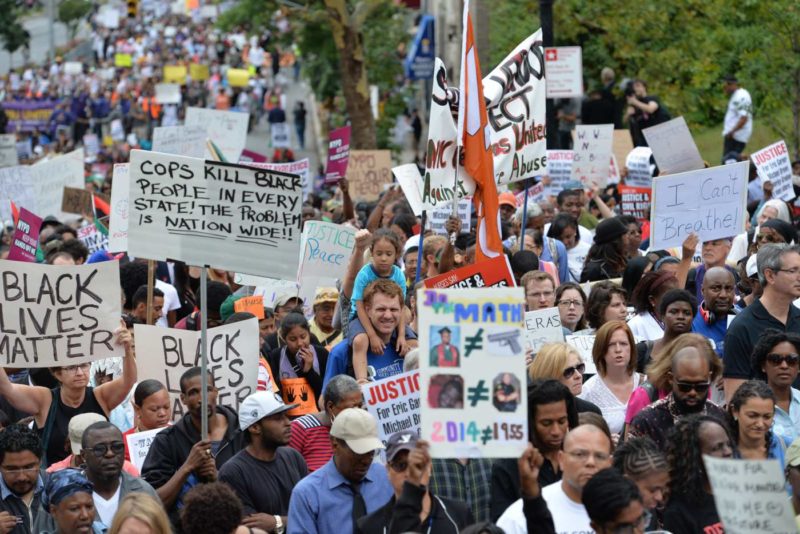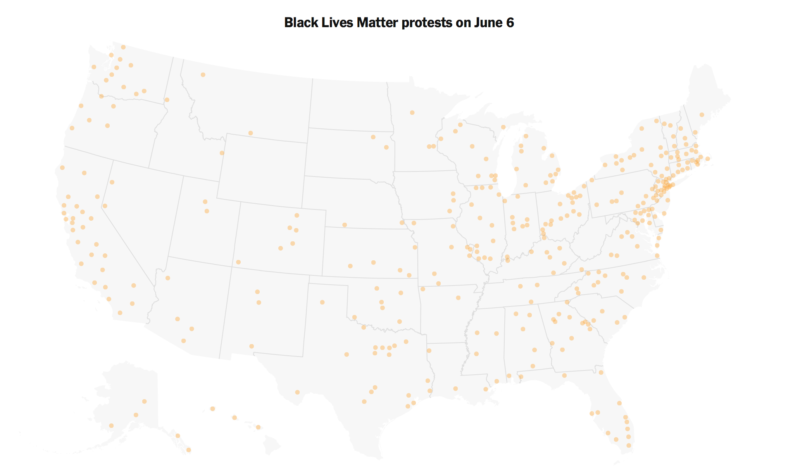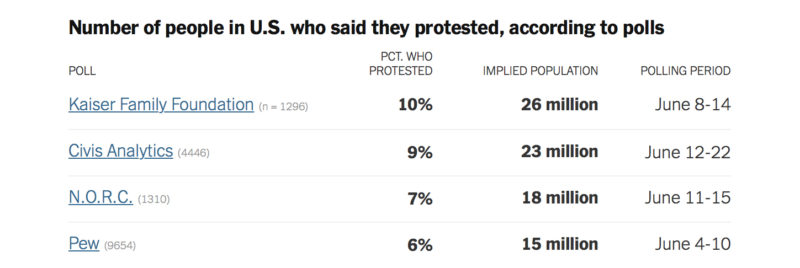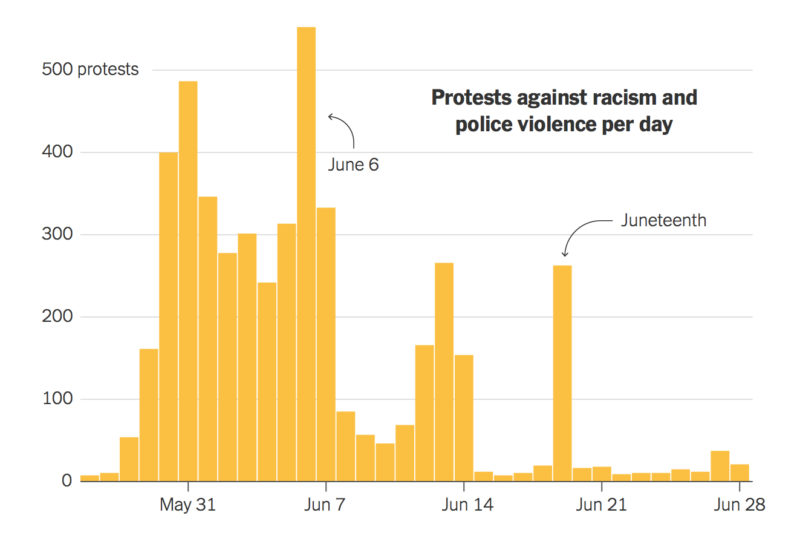Special News Series: Rising Up For Justice! – Black Lives Matter May Be the Largest Movement in U.S. History
Share
Explore Our Galleries
Breaking News!
Today's news and culture by Black and other reporters in the Black and mainstream media.
Ways to Support ABHM?
Introduction To This Series:
This post is one installment in an ongoing news series: a “living history” of the current national and international uprising for justice.
Today’s movement descends directly from the many earlier civil rights struggles against repeated injustices and race-based violence, including the killing of unarmed Black people. The posts in this series serve as a timeline of the uprising that began on May 26, 2020, the day after a Minneapolis police officer killed an unarmed Black man, George Floyd, by kneeling on his neck. The viral video of Floyd’s torturous suffocation brought unprecedented national awareness to the ongoing demand to truly make Black Lives Matter in this country.
The posts in this series focus on stories of the particular killings that have spurred the current uprising and on the protests taking place around the USA and across the globe. Sadly, thousands of people have lost their lives to systemic racial, gender, sexuality, judicial, and economic injustice. The few whose names are listed here represent the countless others lost before and since. Likewise, we can report but a few of the countless demonstrations for justice now taking place in our major cities, small towns, and suburbs.

To view the entire series of Rising Up for Justice! posts, insert “rising up” in the search bar above.
Black Lives Matter May Be the Largest Movement in U.S. History
By Larry Buchanan, Quoctrung Bui and Jugal K. Patel, NY Times
July 3, 2020

The recent Black Lives Matter protests peaked on June 6, when half a million people turned out in nearly 550 places across the United States. That was a single day in more than a month of protests that still continue to today.
Four recent polls — including one released this week by Civis Analytics, a data science firm that works with businesses and Democratic campaigns — suggest that about 15 million to 26 million people in the United States have participated in demonstrations over the death of George Floyd and others in recent weeks.
These figures would make the recent protests the largest movement in the country’s history, according to interviews with scholars and crowd-counting experts.

“I’ve never seen self-reports of protest participation that high for a specific issue over such a short period,” said Neal Caren, associate professor at the University of North Carolina at Chapel Hill, who studies social movements in the United States….
Prof Darity told CNBC: “the present moment seems to afford more of an Across the United States, there have been more than 4,700 demonstrations, or an average of 140 per day, since the first protests began in Minneapolis on May 26, according to a Times analysis. Turnout has ranged from dozens to tens of thousands in about 2,500 small towns and large cities.

“The geographic spread of protest is a really important characteristic and helps signal the depth and breadth of a movement’s support,” said Kenneth Andrews, a sociology professor at the University of North Carolina at Chapel Hill….
he protests may also be benefitting from a country that is more conditioned to protesting. The adversarial stance that the Trump administration has taken on issues like guns, climate change and immigration has led to more protests than under any other presidency since the Cold War.
According to a poll from The Washington Post and the Kaiser Family Foundation, one in five Americans said that they had participated in a protest since the start of the Trump administration, and 19 percent said they were new to protesting.
Read the full article here.









Comments Are Welcome
Note: We moderate submissions in order to create a space for meaningful dialogue, a space where museum visitors – adults and youth –– can exchange informed, thoughtful, and relevant comments that add value to our exhibits.
Racial slurs, personal attacks, obscenity, profanity, and SHOUTING do not meet the above standard. Such comments are posted in the exhibit Hateful Speech. Commercial promotions, impersonations, and incoherent comments likewise fail to meet our goals, so will not be posted. Submissions longer than 120 words will be shortened.
See our full Comments Policy here.